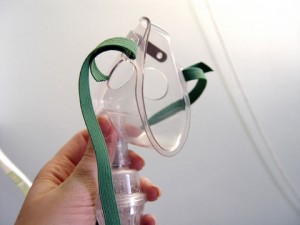 The reported clinical benefits of respiratory muscle training include improved pressure generation by the respiratory muscles, reduced dyspnea, increased functional activity and endurance, and heightened athletic performance. However, respiratory muscle training has not yet been widely adopted into routine physical therapy practice. Many patients have disuse atrophy from a variety of causes such as COPD, MS, peripheral nerve injuries, SCI, prolonged bed rest, or being on prolonged mechanical ventilation.
The reported clinical benefits of respiratory muscle training include improved pressure generation by the respiratory muscles, reduced dyspnea, increased functional activity and endurance, and heightened athletic performance. However, respiratory muscle training has not yet been widely adopted into routine physical therapy practice. Many patients have disuse atrophy from a variety of causes such as COPD, MS, peripheral nerve injuries, SCI, prolonged bed rest, or being on prolonged mechanical ventilation.
How do we determine which patients may benefit from respiratory muscle training, and how do we characterize the essential components of an exercise prescription designed to improve the performance of the inspiratory and expiratory muscles?
We do know that reversing respiratory muscle weakness and fatigue can improve patient outcomes, function and subsequent quality of life.
On the one hand, do we have evidence for this type of physical therapy? On the other hand, why would strengthening these muscles be any different from the other muscle strengthening and endurance training we do?
Clinicians: What types of exercise and at what frequency is best? What clinical signs do you monitor when performing your therapy? Does strength come back along with endurance to reduce the perception of dyspnea or do you see one before the other? How do you gauge progress?
]]>
